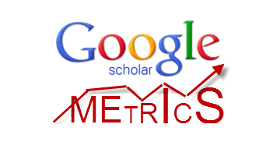Towards a Responsible Use of Statistics in Biomedical and Epidemiological Research
Abstract
Although the application of numerical methods to the study of typical research problems in the medical and health sciences dates back to the 1830s with the contributions of the French physician Pierre A. Louis, the formalization of mathematical statistics as an analytical tool is historically associated with the contributions of Karl Pearson, Ronald Fisher, and Austin Bradford Hill, who laid the foundations for what we know today as evidence-based medicine, beginning in the mid-20th century. Since then, the presence of some analytical tool from inferential statistics has been considered an indispensable and irreplaceable mark of quality in research. Without denying the instrumental value of statistical resources, the purpose of this essay is to argue that their irresponsible and superficial application has contributed to fostering an attitude of intellectual laziness among medical researchers and to the establishment of rigid norms that are contrary to the rigor and quality of scientific thought. The topic has universal interest and relevance, but the arguments in the article refer mainly to the author's experience in national scenarios, and refer in particular to two analytical resources whose irresponsible use is particularly frequent: statistical significance tests and predictive models.
Keywords: observational studies; randomized controlled clinical trials; sample size; confounding variables; linear models; prediction vs. explanation; hypothesis validation.
Downloads
References
1. Barreto Villanueva A. El progreso de la Estadística y su utilidad en la evaluación del desarrollo. Papeles de población. 2012; 18 (73), 241-271).
2. Quintero KDS, Melo JSO (2022) Bioestadística: evolución y aplicaciones. Revista Sigma, 18(1), 1-7. https://dialnet.uniroja.es/).
3. Blakeley B. McShane, David Gal, Andrew Gelman, Christian Robert & Jennifer L. Tackett (2019) Abandon Statistical Significance, The American Statistician, 73:sup1,235-245, DOI: 10.1080/00031305.2018.1527253.
4. Stuart H. Hurlbert, Richard A. Levine & Jessica Utts (2019) Coup de Grâce for a Tough Old Bull: “Statistically Significant” Expires, The American Statistician, 3:sup1, 352-357, DOI: 10.1080/00031305.2018.1543616.
5. Valentin Amrhein, David Trafimow & Sander Greenland (2019) Inferential Statistics as Descriptive Statistics: There Is No Replication Crisis if We Don’t Expect Replication, The American Statistician, 73:sup1, 262-270, DOI: 10.1080/00031305.2018.1543137.
6. Hernán MA, Robins JM. Instruments for causal inference. An epidemiologist´s dream? Epidemiology 2006; 17: 360-372.
7. Joachim I. Krueger & Patrick R. Heck (2019) Putting the P-Value in its Place, The American Statistician, 73:sup1, 122-128, DOI: 10.1080/00031305.2018.1470033.
8. Ronald L. Wasserstein, Allen L. Schirm & Nicole A. Lazar (2019) Moving to a World Beyond “p < 0.05”, The American Statistician, 73:sup1, 1-19, DOI:10.1080/00031305.2019.1583913.
9. Rozeboom WW (1997) Good science is abductive, not hypothetico-deductive. En LL Harlow, SA Mulaik, & JH Steiger (Eds.), What if there were no significance tests? (pp. 335–391). Hillsdale, NJ: Erlbaum.
10. Steven N. Goodman (2019) Why is Getting Rid of P-Values So Hard? Musings on Science and Statistics, The American Statistician, 73:sup1, 26-30, DOI: 10.1080/00031305.2018.1558111.
11. Popper Karl R. Conjeturas y refutaciones. El desarrollo del conocimiento científico. Barcelona. Buenos Aires. México. Ediciones Paidós. 1991
12. Gattei Stéfano. Karl Popper´s Philosophy of Science. Rationality Without Foundations. Routledge Studies in the Phylosophy of Science 5. 2009.
Downloads
Published
How to Cite
Issue
Section
License
Copyright (c) 2025 Jorge Bacallao Gallestey

This work is licensed under a Creative Commons Attribution-NonCommercial 4.0 International License.
Aquellos autores/as que tengan publicaciones con esta revista, aceptan los términos siguientes:
- Los autores/as conservarán sus derechos de autor y garantizarán a la revista el derecho de primera publicación de su obra, el cuál estará simultáneamente sujeto a la Licencia de Creative Commons Reconocimiento-NoComercial 4.0 Internacional que permite a terceros compartir la obra siempre que se indique su autor y su primera publicación esta revista.
- Los autores/as podrán adoptar otros acuerdos de licencia no exclusiva de distribución de la versión de la obra publicada (p. ej.: depositarla en un archivo telemático institucional o publicarla en un volumen monográfico) siempre que se indique la publicación inicial en esta revista.
- Se permite y recomienda a los autores/as difundir su obra a través de Internet (p. ej.: en archivos telemáticos institucionales o en su página web) antes y durante el proceso de envío, lo cual puede producir intercambios interesantes y aumentar las citas de la obra publicada. (Véase El efecto del acceso abierto).
http://creativecommons.org/licenses/by-nc/4.0/



